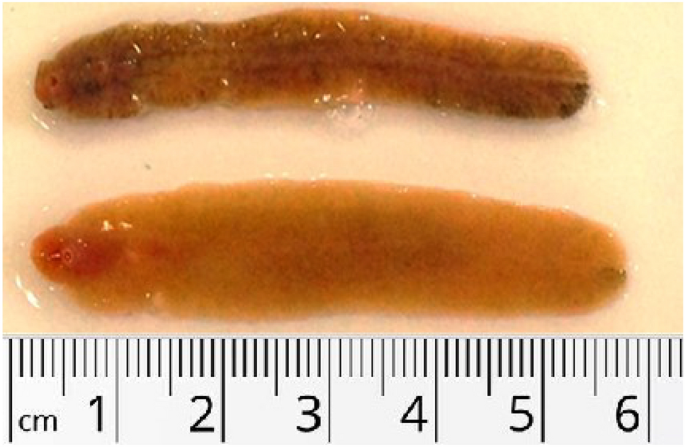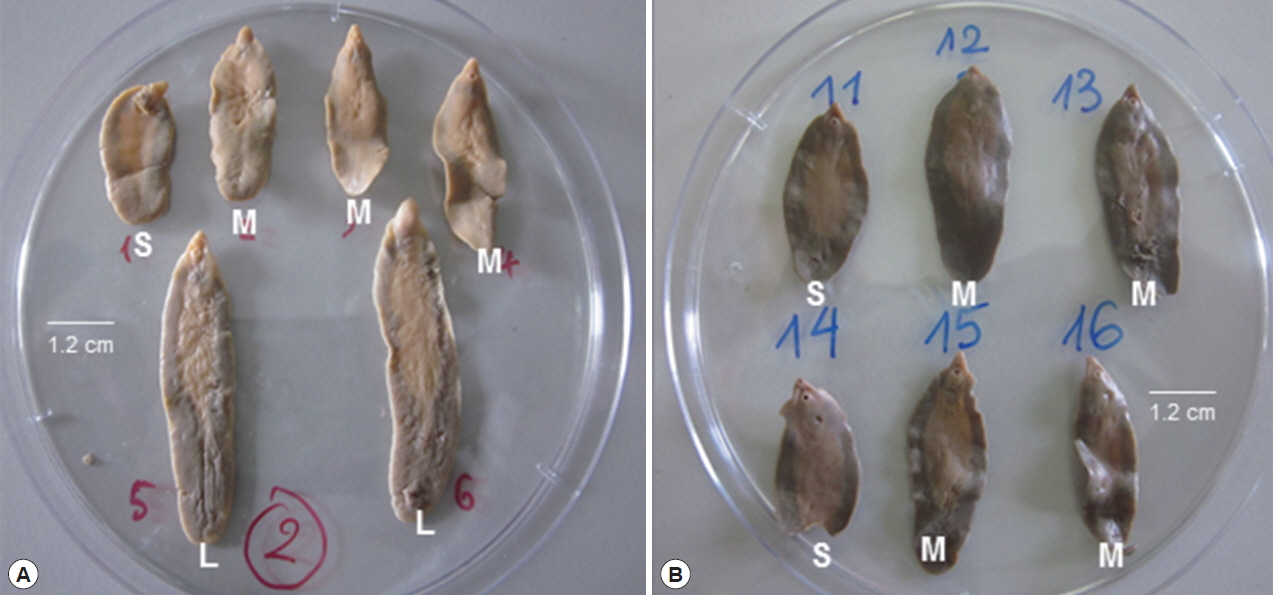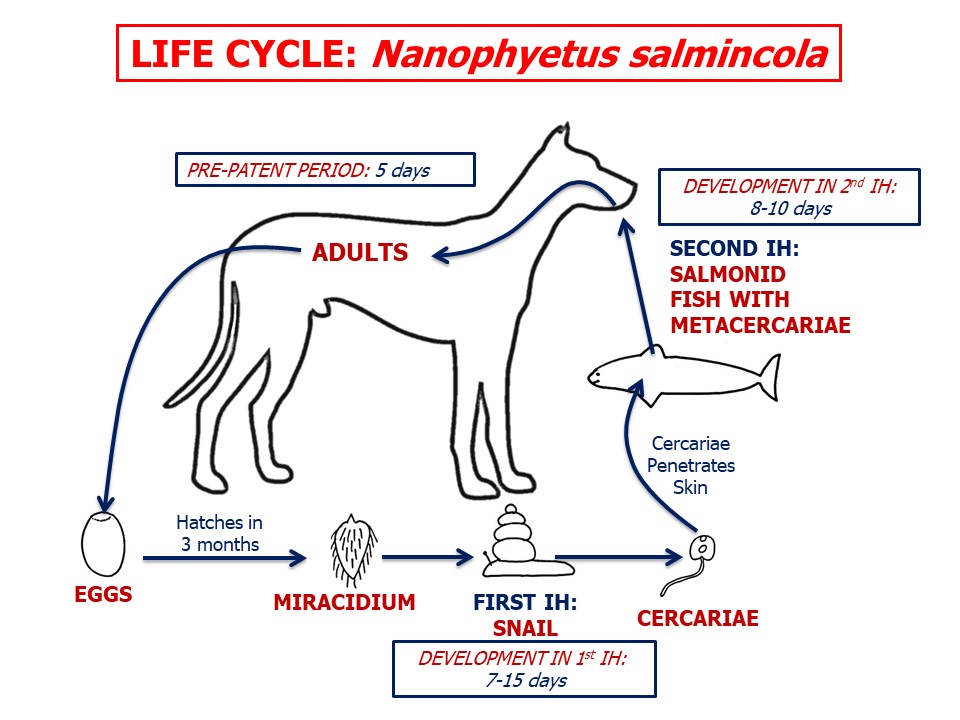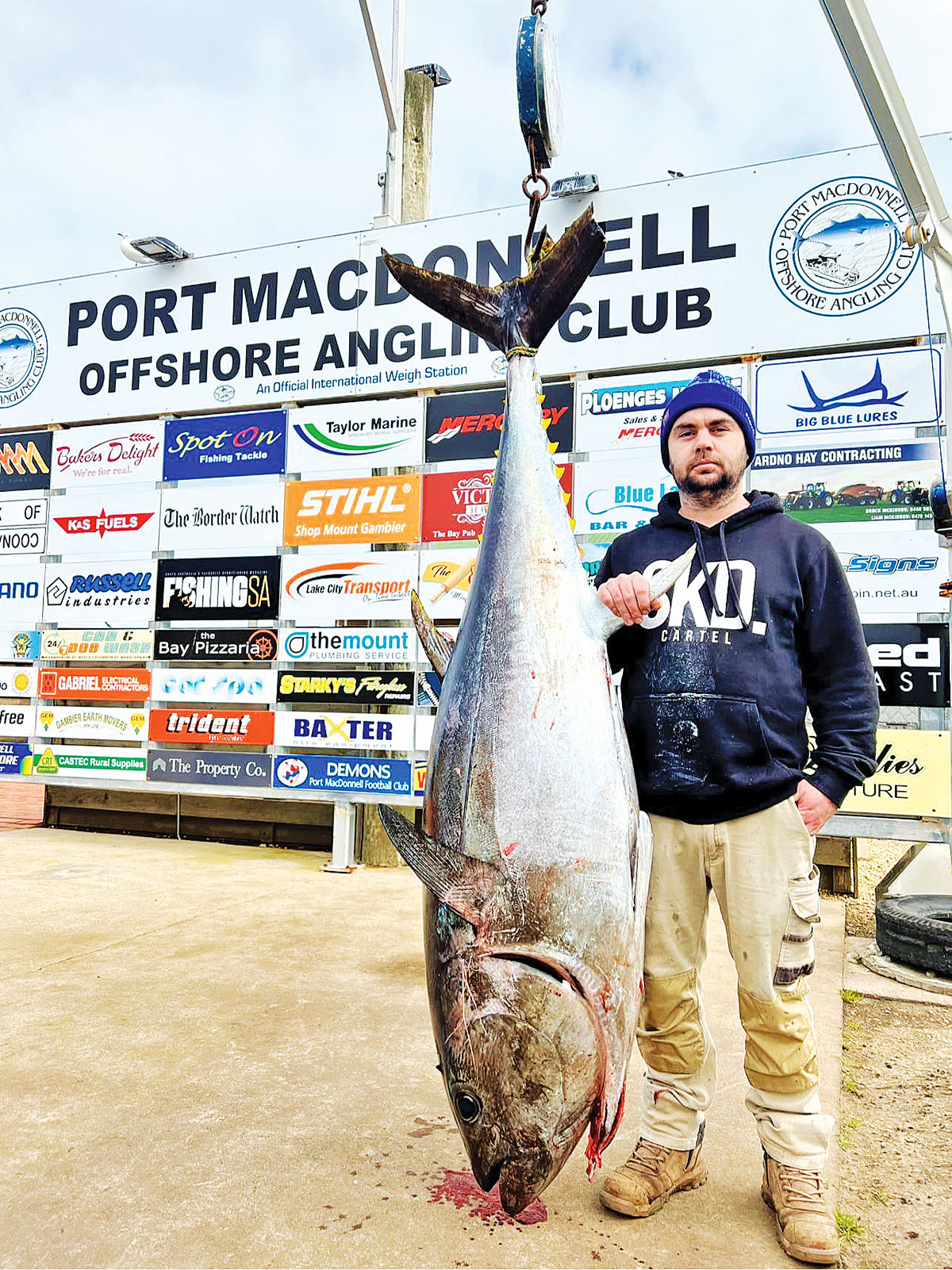Trematodes (Flukes) Department of Parasitology, Xiangya Medical

More than 50 species of paragonimus have been reported as parasites. P. Westermani is widely distributed in East Asia and is the most important species. It was first discovered from Bengal tigers that had died in the zoos in Europe in In 1880, human infections were first found in Taiwan of China Discovery
Trematodes (Flukes) Department of Parasitology, Xiangya Medical School, Central South University.
Paragonimus westermani (lung fluke)
P. Westermani is widely distributed in East Asia and is the most important species. It was first discovered from Bengal tigers that had died in the zoos in Europe in In 1880, human infections were first found in Taiwan of China Discovery.
Morphology 1 、 Adult worm Thick, reddish-brown in color,a flattened ventral side,a swelled dorsal side, like half a peanut, ( mmx4-6mm) Oral sucker & ventral sucker are similar in size;ventral sucker is at pre- equator Two testes, the ovary and the uterus are situated side by side Cecum with two winding branches Vitelline follicles are extensive in lateral fields
Morphology 1 、 Adult worm Surface with spines
Morphology 2 、 Egg Average size: 85μm X 53μm Golden yellow, Irregular elliptic, Thick and asymmetric shell with a big operculum, Inside, a egg cell surrounded by about ten yolk cells
Morphology 3 、 Metacercaria Spherical, About µm with two layers of transparent walls in crab and crayfish
Metacercaria Adults Juveniles Adults Eggs Miracidum Sporocyst Mother Redia Daughter Redia Ceraria Definitive host (Human,cat,dog,tiger) 1st intermidate host (snails in fresh water) 2nd intermidate host (crab and crayfish) Definitive host (Human,cat, dog,tiger) melania snail Crayfish Crab
Development in human Life Cycle Infection Stage metacercaria Mode ① eating raw crab or crayfish with Metacercaria ② eating raw transport host, such as wild pigtransport host ③ drinking raw stream water
Intestine abdominal cavity subcutaneous tissue abdominal wall Liver,kidney Reproductive sytem thoracic cavity (diaphragm) capsule of heart lung brain ( intestinal wall ) Life Cycle Development in human Migration
Development in human Life Cycle Residence Stage Site Life span Adults,Younger worms Adults: lung Younger worms: liver,kidney,pancreas,brain, subcutaneous Habitus Wandering 5-6 years, up to 20 years
Development in human Life Cycle Discharge Stage Mode Eggs In the sputum or stool
Mechanical injury by migration and inhabitation of the worm B. Immunopathological reactions by secretions and excrements of the worm Process of the paragonimiasis: A. Acute stage: B. Chronic stage:.
Pathogenesis Acute stage: several days to 1 month after infection mainly caused by invasion and migration of the young flukes some people may be asymptomatic tired, loss of appetite, fever,diarrhea, abdominal pain,chest pain, cough and eosinophilia etc.
Cystic stage: the cyst wall is formed due to the progressive fibrosis of the surrounding tissue. A. The cystic contents are chocolate or rusty thick fluid with eggs and Charcot-Leyden crystals, which looks like sesame paste. B. The shadow of the cyst can be seen on X-ray. C. Patients cough out the rusty sputum when the cyst communicates with the bronchioles.
Pathogenesis Chronic stage Fibrous-scar stage: After worm die or move to other sites, the cyst will be filled with fibrous scar.The exudate and pus are expelled or absorbed and replaced by fibrous-scar tissue.
Pathogenesis Infected lungs Adults worms in lungs
Cutaneous paragonimiasis : the wandering and painless subcutaneous nodules..
But the eggs may not be present until 2 to 3 months after infection. A. Sputum examination: (1) Alkali digestive method (10%NaOH), (2) Direct sputum smear B. Stool examination: (1) Water sedimentation method, (2) Direct fecal smear.
Immunological tests for reference IDT(intradermal test) ELISA for special antibodies dot-ELISA for Cag X-ray /CT examination for chest or brain Diagnosis.
In China, it is endemic in 27 provinces except Tibet, Xinjiang, Inner Mongolia, Qinghai, and Ningxia. Its prevalence is related to the natural focus. In some forest and desert the parasitic zoonoses transmit among vertebrate, which areas is called natural endemic focus..
Endemic areasNatural focus Epidemiology
In the Far East, crabs are frequently eaten after they have been slightly salted, pickled,or immersed briefly in wine (drunken crab),practices that are seldom lethal to the metacercaria. Fresh crab juice, which is used for the treatment of infertility in Cameroon and of measles in Korea. Children living in endemic areas may be infected while handling or ingesting crabs during the course of play..
(3) Avoid sputum and stool getting into water..
How do humans contract this parasite. How to diagnose this disease .
westermani’s Definitive hosts: Paguma, cats, dogs etc Human: non-normal host Its larvae cann’t develop into mature worm in human. Pathological changes are caused by migration of larvae Diagnosis is based on Immunological test and biopsy.
largest intestinal fluke, also named as giant Asian intestinal fluke ,which can cause Fasciolopsis In 1873, first cases of Fasciolopsis was found in Guangzhou Introduction
The ventral sucker is much larger than the oral sucker and is located close to it. Two coral-liked testes are located in the posterior half of the body. The tegument is densely covered with spines..
Morphology 2 、 Egg the largest helminth egg oval, yellowish, a thin shell, a small operculum, Inside an egg cell surrounded by some yolk cells
Definitive hosts: human and pigs Pigs are the most important reservoir hosts Intermediate host: Planorbis snail Medium of water plants: water chestnut, bamboo, caltrop, lotus Life Cycle
Metacercaria Adults Juveniles Adults Eggs Miracidum Sporocyst Mother Redia Daughter Redia Ceraria Definitive host (Human,pig) intermidate host (Planorbis snail) Aquatic plant medium (water chestnut, water caltrop) Definitive host (Human,pig)
Development in human Life Cycle Infection Stage metacercaria Mode eating raw water plants with metacercariae
Development in human Life Cycle Residence Stage Site Life span Adults Small intestine 1-4 years Mode Attatch to the intestine wall
Development in human Life Cycle Discharge Stage Mode Eggs, Adults In the feces
Pathogenesis Mechanical injury due to the attachment of the adults Spoliation of nourishment, covering the wall of intestine to affect absorption Allergy caused by secretions and excrements Intestinal obstruction by a mass of the worms Hemorrhage, ulceration, abscess of the intestinal wall
Some patients may have abdominal discomfort, nausea, vomiting and chronic diarrhea. Some infected children manifest anemia, weight loss, edema of leg and face even ascites..
Seroimmunological test: useful in detecting early infection or general survey..
The prevalence of fasciolopiasis is related to growing water plants and feeding pigs on water plants.
Prevention: (1) Health education, (2) Avoid eating raw water-plants or avoid feeding pigs on raw water plants, (3) Deal with night soil.
buski Definitive human human human Reservoir host tiger, dog etc dog, cat etc pig Paratenic host boar etc no no Egg sputum/feces feces feces Miracidium water snail water Sporocyst snail snail snail Rediae snail mother snail snail Daughter snail snail Cercariae snail/water Metacercariae crab/crayfish fish/shrimp water vegetation Larvae migration no no Adult worm lungs/other organs bile ducts intestine Ectopic parasitism yes no no Summary.
If the larva enter a normal definitive host, it can continue to develop into adult worm. The non-normal host is called a paratenic host or transport host..
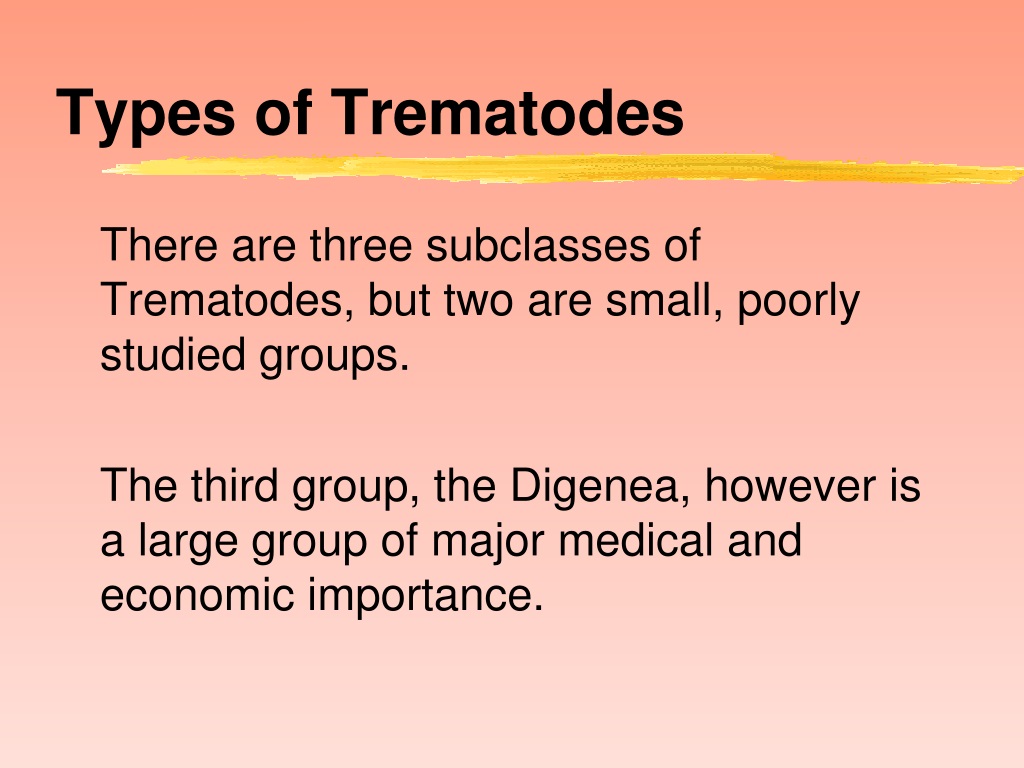
PPT - Trematodes PowerPoint Presentation, free download - ID:9313270

Trematode - an overview

Paragonimus These worms ' reproductive organs stand side by side

PPT - TREMATODES PowerPoint Presentation, free download - ID:3125327

Trematodes (Flukes) Department of Parasitology, Xiangya Medical

Paragominus westermani. Kingdom:Animalia Phylum:Platyhelminthes

Companion Animal Parasite Council

Trematodes (Flukes) Department of Parasitology, Xiangya Medical

Trematodes Table Summary - Medical Parasitology - TREMATODES
